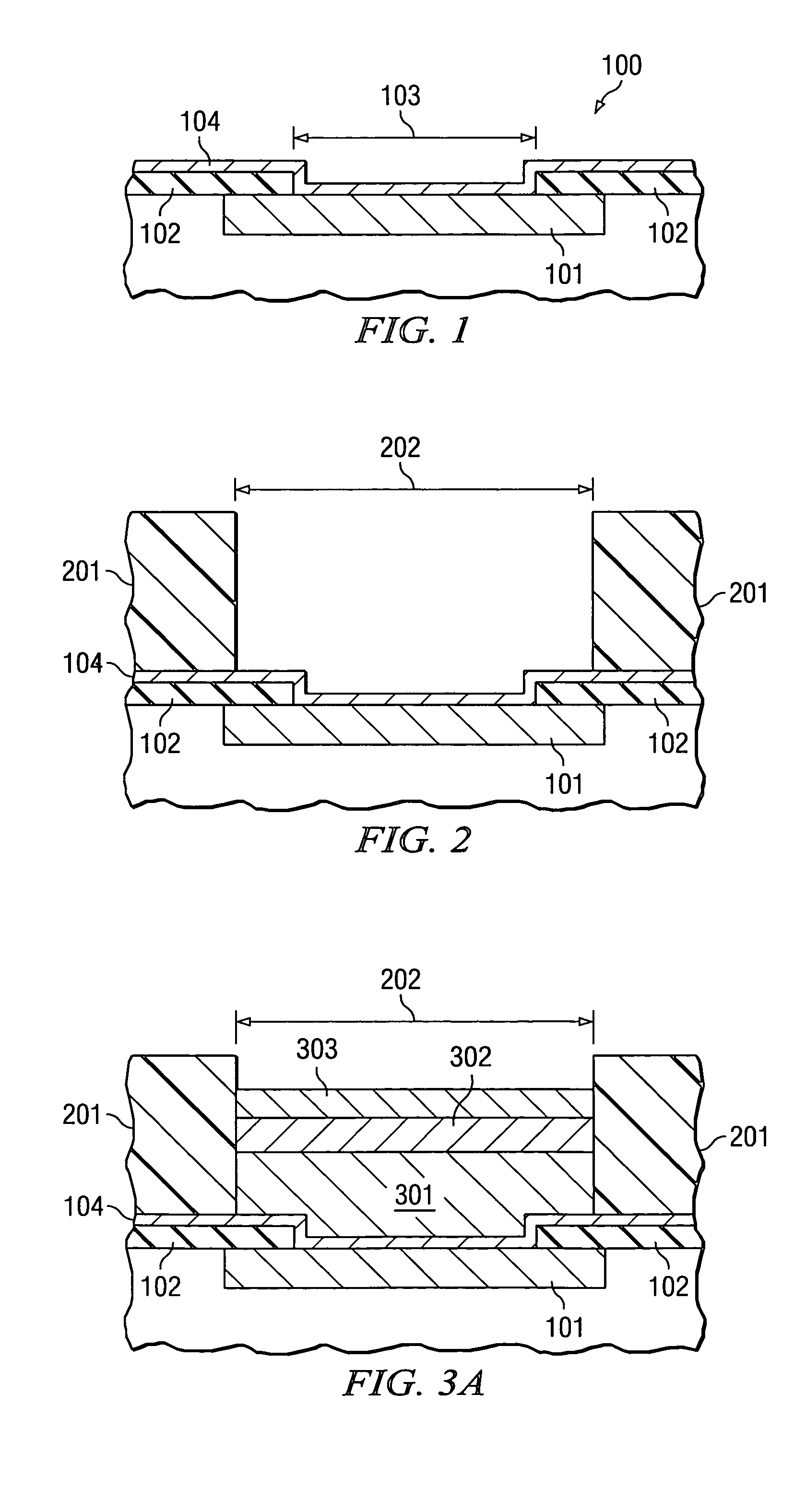Method for chemical etch control of noble metals in the presence of less noble metals
a technology of noble metals and chemical etching, applied in the field of metalurgical systems, can solve the problems of inability to easily break copper oxide films overlying metallic copper, inability to prevent the flow of thin copper(i)oxide films during the manufacturing process, and inability to reliably etch bare copper bond pads, etc., to achieve high reliability of finished ic assemblies
- Summary
- Abstract
- Description
- Claims
- Application Information
AI Technical Summary
Benefits of technology
Problems solved by technology
Method used
Image
Examples
Embodiment Construction
[0025]The present invention is related to U.S. patent application Ser. No. 10 / 086,117, filed on Feb. 26, 2002 (Bojkov et al., “Waferlevel Method for Direct Bumping on Copper Pads in Integrated Circuits”).
[0026]FIGS. 1 to 5B are schematic cross sections illustrating certain steps in the process flow for completing the fabrication of a bonding pad on an integrated circuit (IC) wafer. FIG. 1 shows schematically a portion of a semiconductor wafer, generally designated 100, having interconnections 101 and a protective overcoat 102. The semiconductor material is preferably silicon, but may alternatively be silicon germanium, gallium arsenide, or another III–V or II–IV semiconductor. The interconnection 101 is preferably copper; alternatively, aluminum or aluminum / copper alloy, or similar materials can be employed. The protective overcoat 102 is preferably silicon nitride, but may alternatively be silicon oxynitride, silicon carbide, silicon dioxide, or a polymer, for example. A window of ...
PUM
| Property | Measurement | Unit |
|---|---|---|
| thick | aaaaa | aaaaa |
| thick | aaaaa | aaaaa |
| thickness | aaaaa | aaaaa |
Abstract
Description
Claims
Application Information
 Login to View More
Login to View More - R&D
- Intellectual Property
- Life Sciences
- Materials
- Tech Scout
- Unparalleled Data Quality
- Higher Quality Content
- 60% Fewer Hallucinations
Browse by: Latest US Patents, China's latest patents, Technical Efficacy Thesaurus, Application Domain, Technology Topic, Popular Technical Reports.
© 2025 PatSnap. All rights reserved.Legal|Privacy policy|Modern Slavery Act Transparency Statement|Sitemap|About US| Contact US: help@patsnap.com



